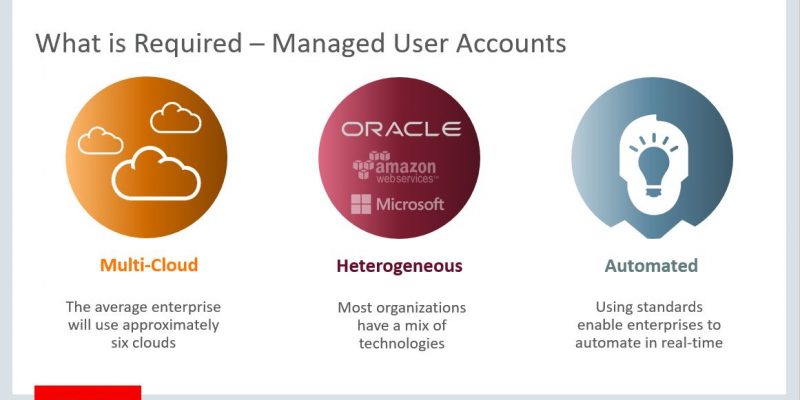“Cloud” or “as-a-service” models have been the buzzwords in today’s digital landscape. Cloud is one of the pillars of Gartner’s Nexus of Forces, the other three being Social Media, Mobile and Information. Global tech behemoths such as Oracle, Amazon, Google, Microsoft, etc., have been vying for a large pie in the global cloud transformation market. The competitive landscape and the marque choices make it difficult for companies, especially their Chief Information Officers or IT Heads, to arrive at a decision on whom to partner with. The move from on-premise to Cloud is a strategic IT decision and can have a lasting impact on the business.
We have listed 5 compelling reasons that can aid your decision to move to Oracle Cloud:
- Oracle Cloud is the only complete Cloud:
A Cloud essentially comprises the application layer, the platform layer and the underlying infrastructure layer. Their subscriptions are called “software-as-a-service”, “platform-as-a-service”, and “infrastructure-as-a-service” respectively. Popularly abbreviated as SaaS, PaaS and IaaS, the combined effect of these could enable organizations to move their entire IT infrastructure and applications to the cloud and become asset-light as against being CAPEX heavy. Oracle Cloud is the only “complete” Cloud solution that can enable you to leverage SaaS, PaaS and IaaS and attain unprecedented levels of optimization in IT spends, thereby adding immense value to your bottom line.
2. Oracle applications run faster on Oracle Cloud:
One of the key concerns before moving to the Cloud is if the applications would run as swiftly and seamlessly as they did when hosted on-premise. Most of the companies would have a set of Oracle Applications that enable business efficiency or customer engagement. By selecting Oracle Cloud, they can ensure that there would be minimal or no interruptions and the migration is seamless. The Oracle applications, both business-user facing and customer facing, can continue to run seamlessly and faster than before. This improves business efficiency and enhances return on IT investments.
3. Only company to provide public or on-premise Cloud (Private Cloud Machine):
With many companies, there is a reluctance or a compliance mandate to ensure that the IT and information resides on their premise itself. Oracle has enabled companies to create a win-win situation, i.e., leverage the benefits of Cloud without compromising on its requirement. With “Private Cloud Machines”, Oracle has enabled companies to leverage comprehensive benefits of its Cloud by deploying its select Cloud infrastructure in the customer’s premises. The customer company enjoys an “as-a-service”, “pay-per-use” model while keeping the IT infrastructure in its proximity.
4. Best use of Engineered system:
Engineered systems, such as Oracle Exadata, comes with a huge license cost. While most companies are aware of its benefits, the huge cost of ownership leads to inertia in adoption. With Oracle Cloud coming into the picture, companies are now able to leverage engineered systems such as Exadata to the fullest by using it as a service to the extent of the requirement. The companies needn’t own the license and bother about perpetual ownership. They can just purchase the required cloud subscription and control usage and spends on these systems accordingly.
5. Non-Oracle workloads can be seamlessly moved to Oracle Cloud:
Oracle Cloud can accommodate non-Oracle workloads. If your applications (core or non-core) are non-Oracle applications, organizations can still move them seamlessly to the Oracle Cloud. The performance levels do not get impacted drastically and your organization can continue with the existing application landscape, while leveraging the cloud to reduce your infrastructure footprint, total cost of ownership and manpower to manage the same. This will save precious IT dollars that can be leveraged better to improve customer engagement, business efficiency and brand equity.
If these compelling reasons have set you thinking, you might be thinking when is the best time to move to Oracle cloud. In my view, I can answer that by drawing inspiration from an old Chinese proverb, “The best time to plant a tree was 20 years ago. The second-best time is now.”
Written by Shrikant Navelkar- Director and Head, Business and Operations – US, Clover Infotech






